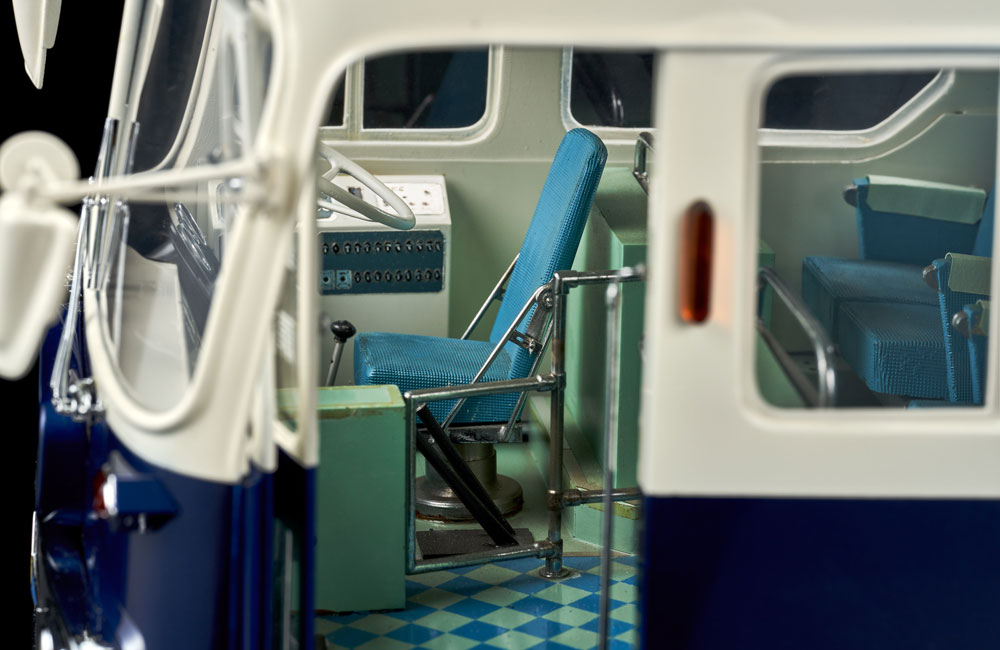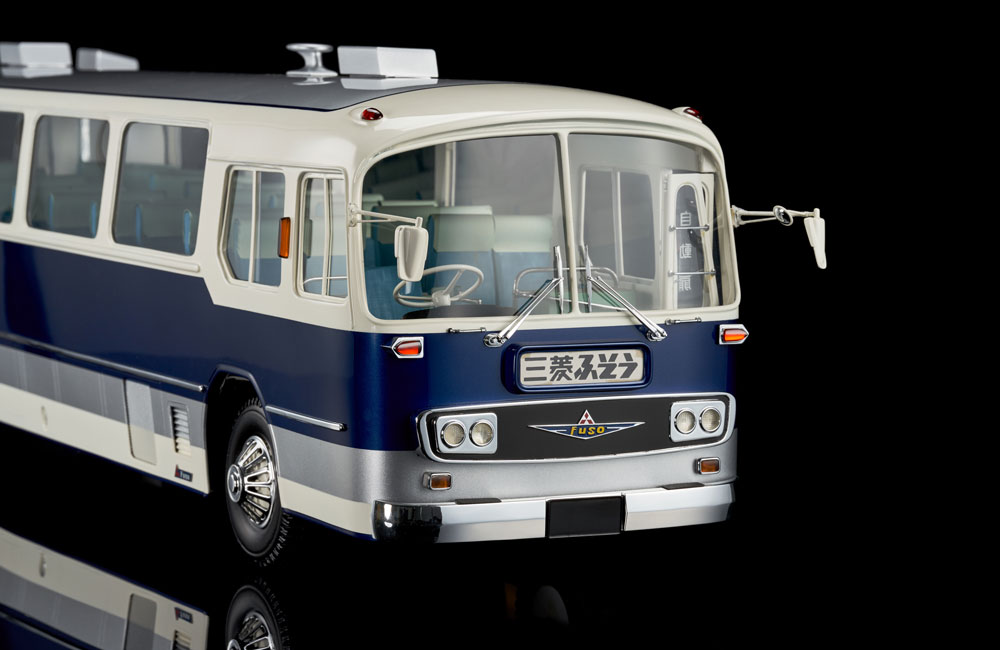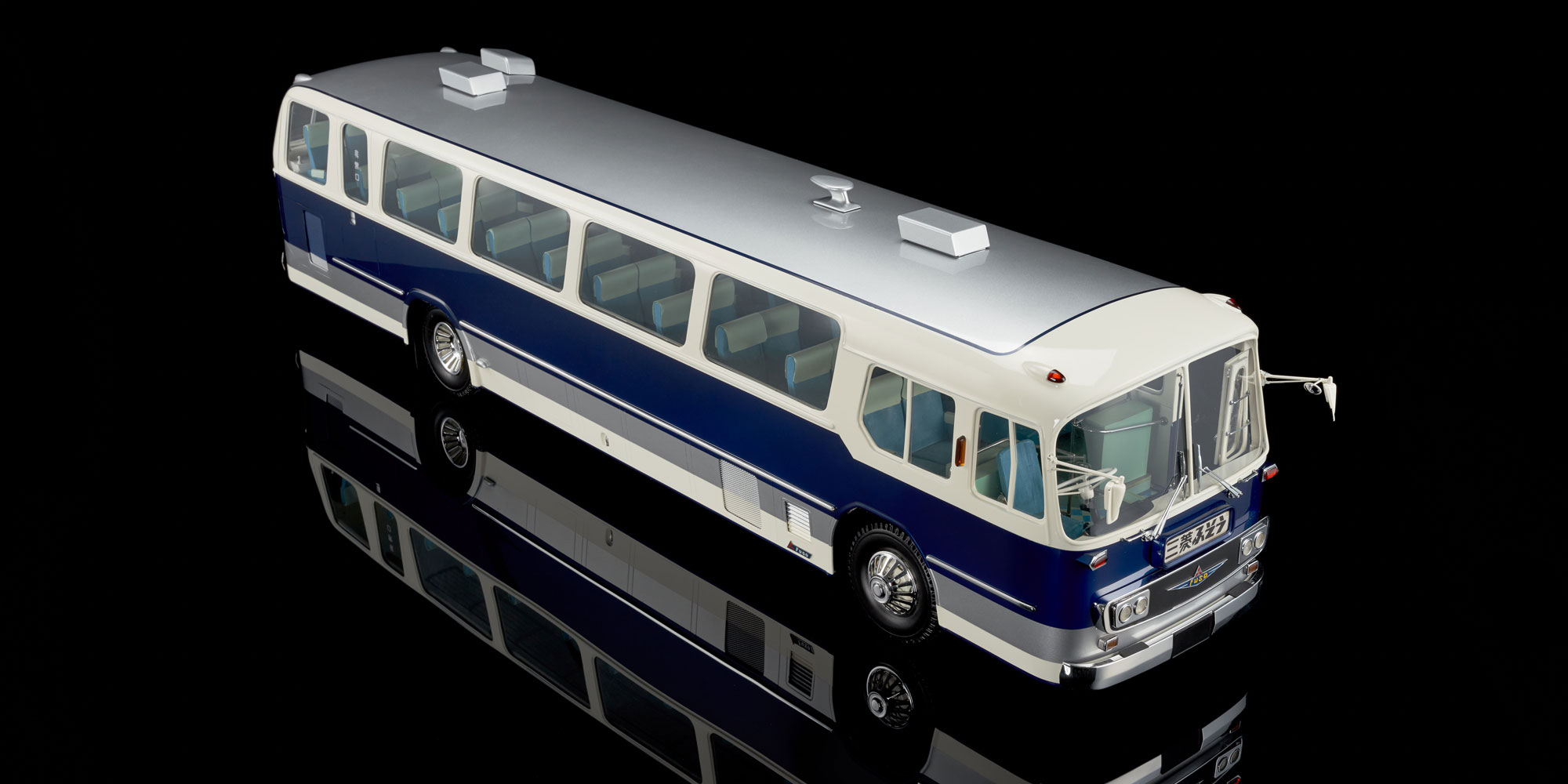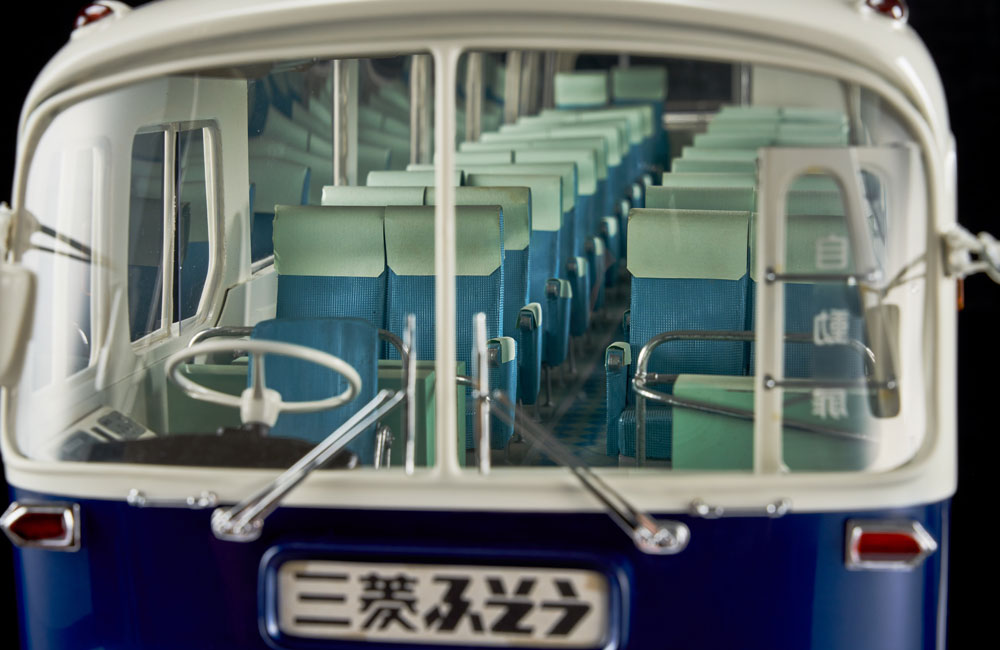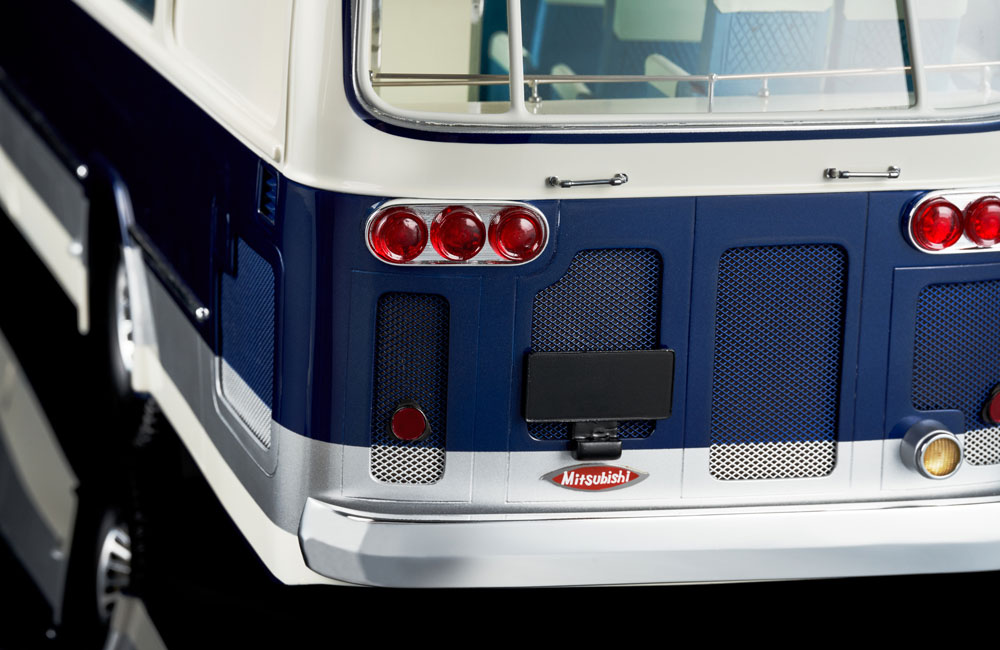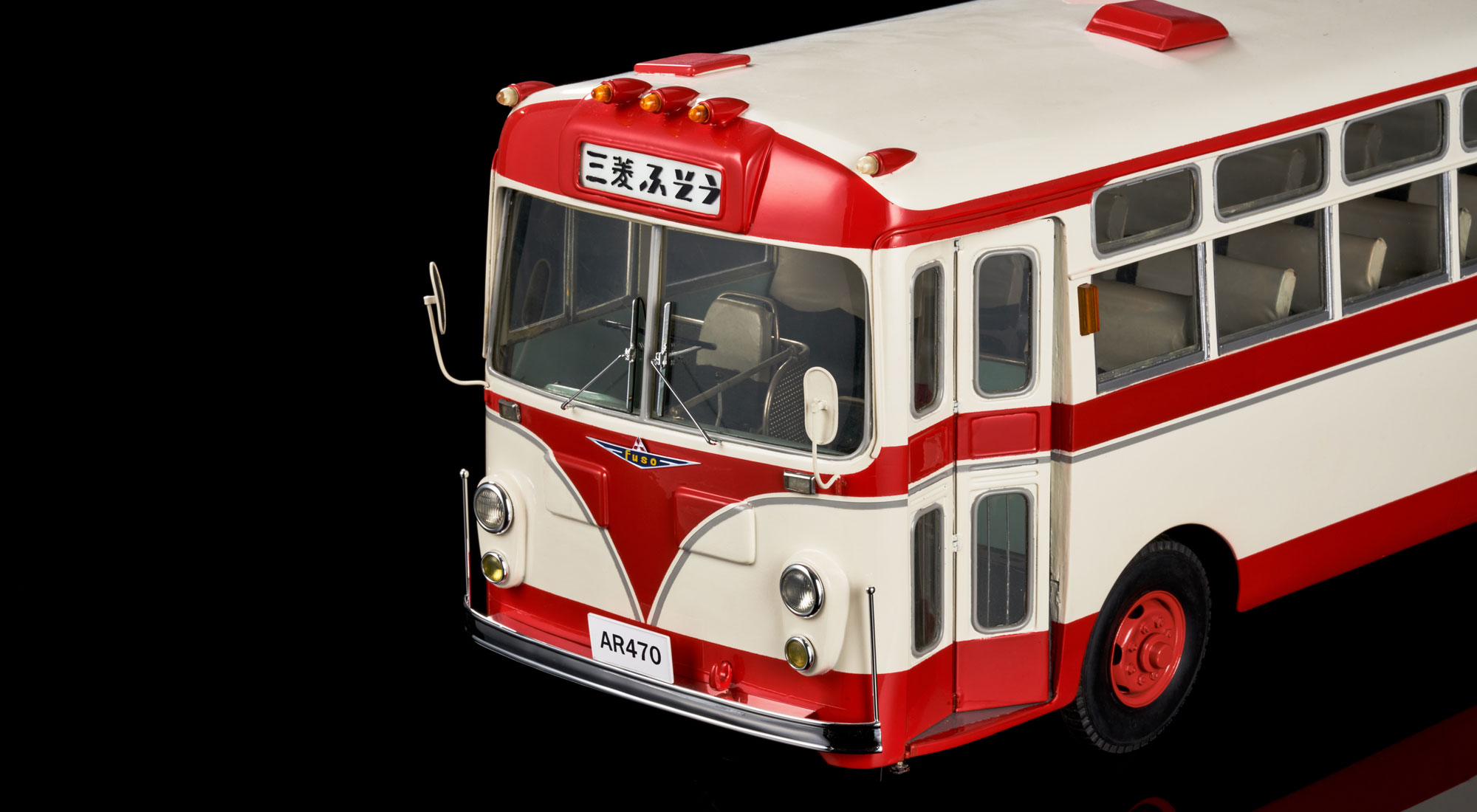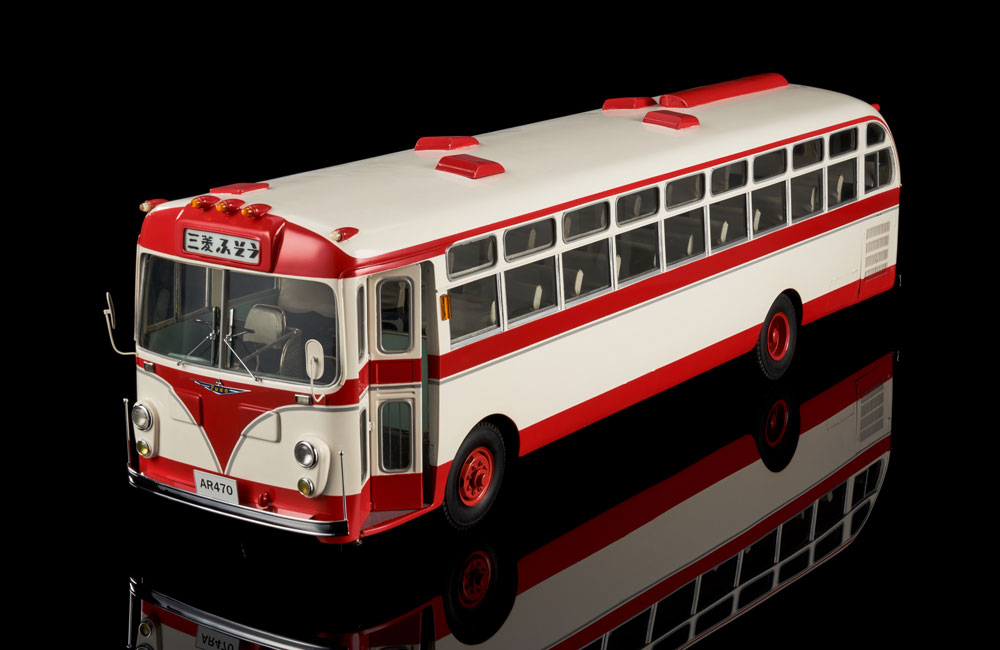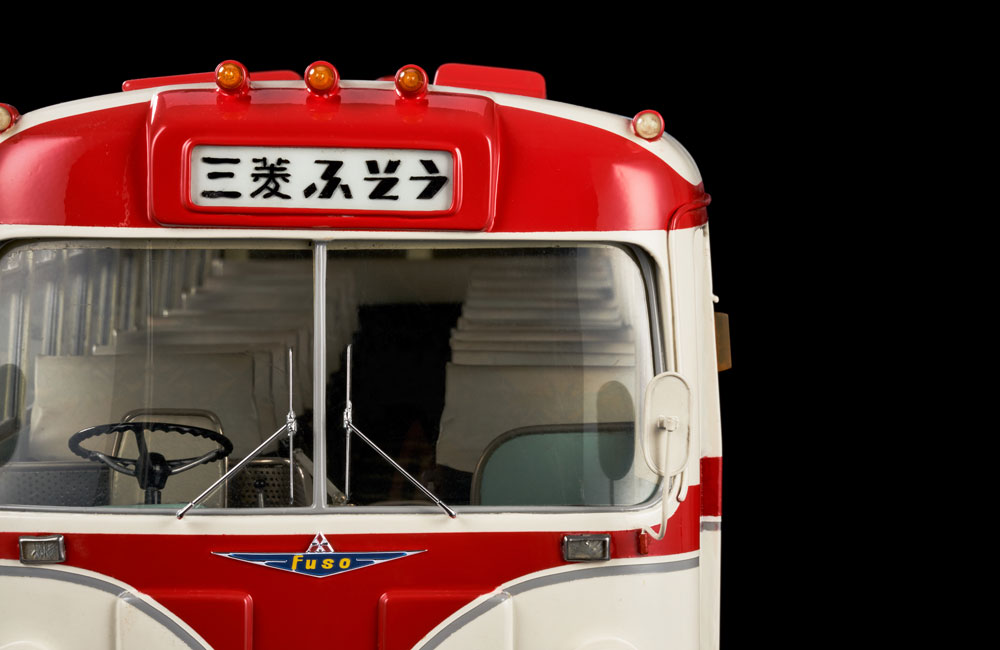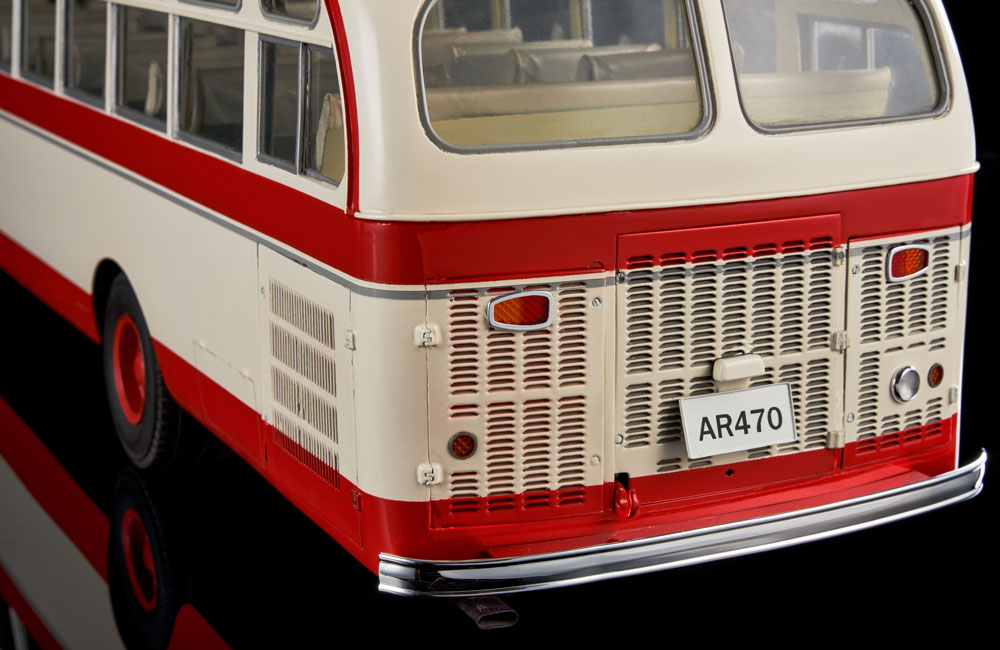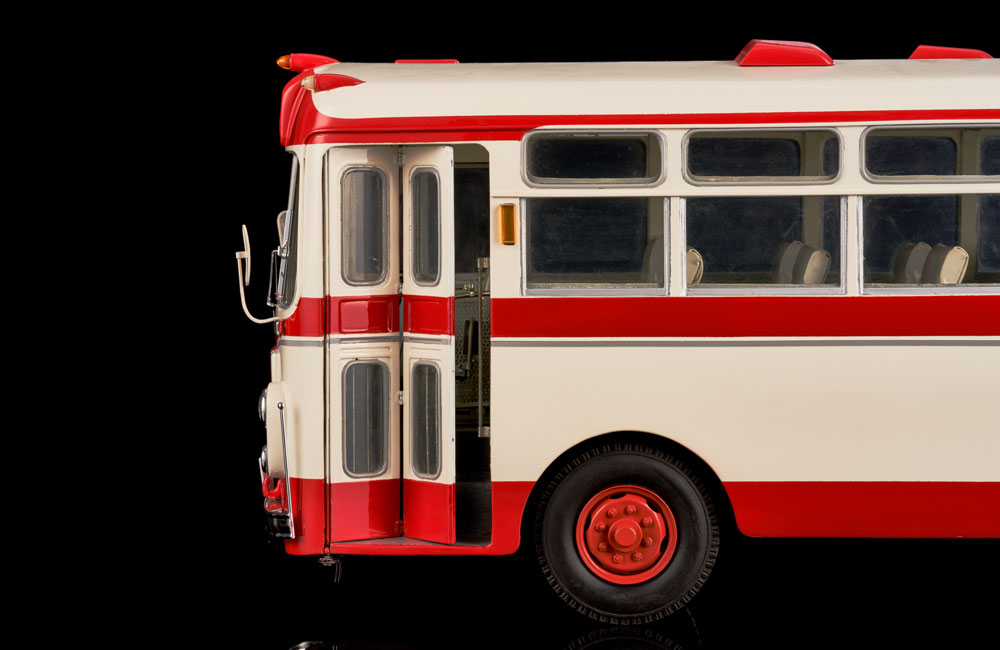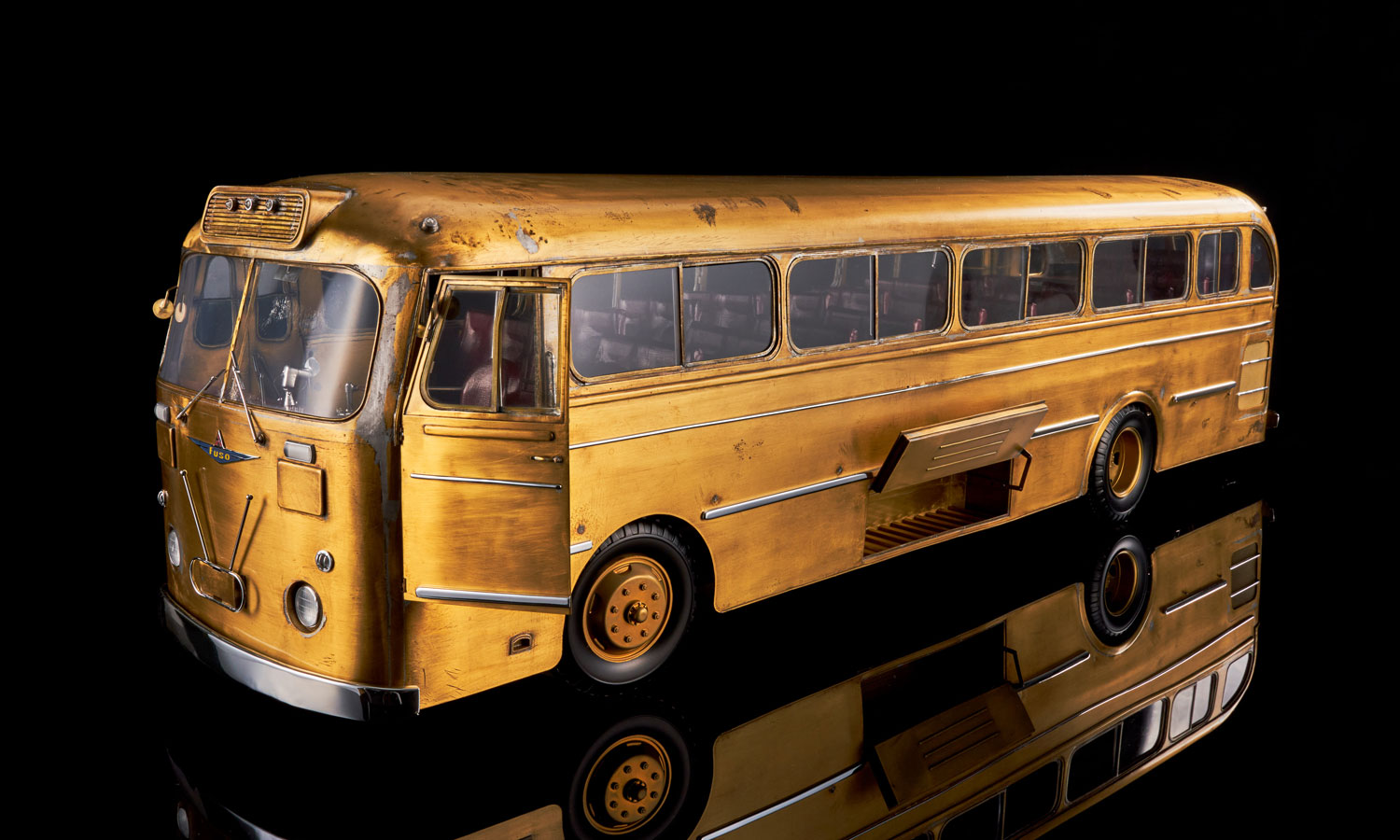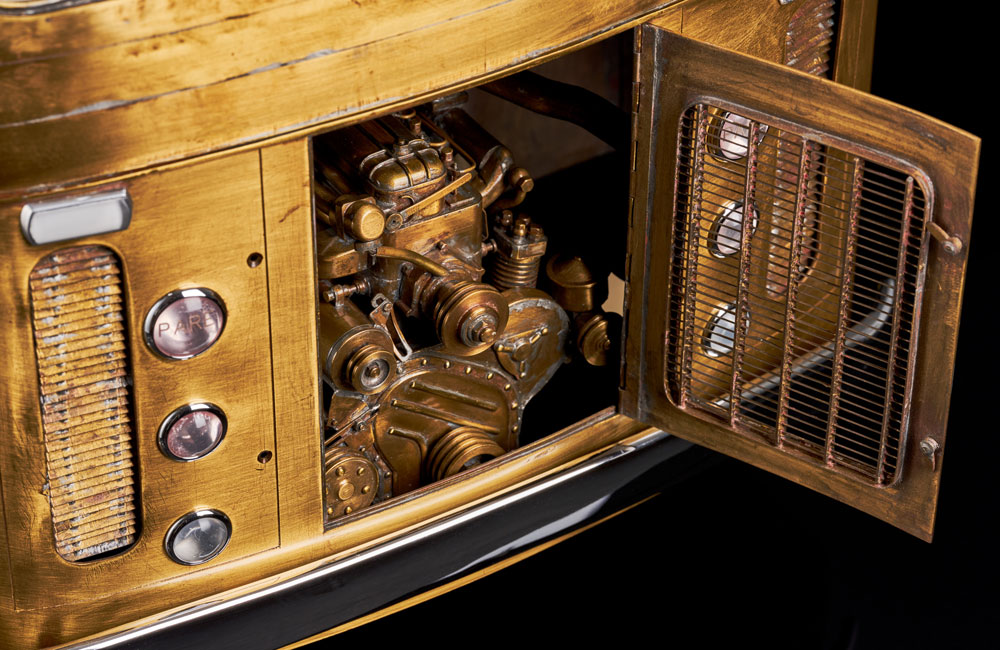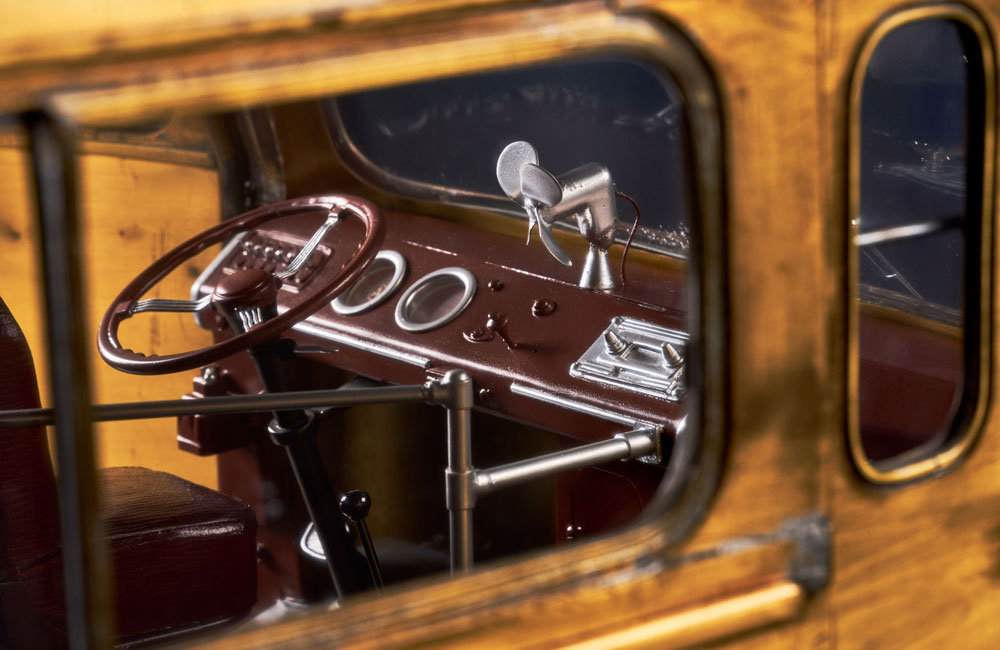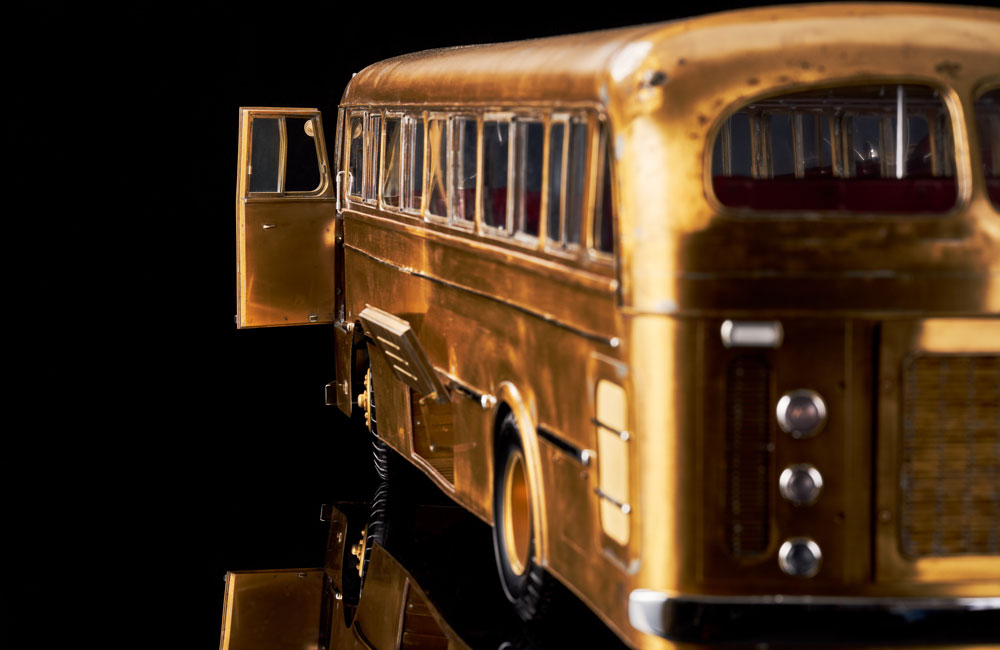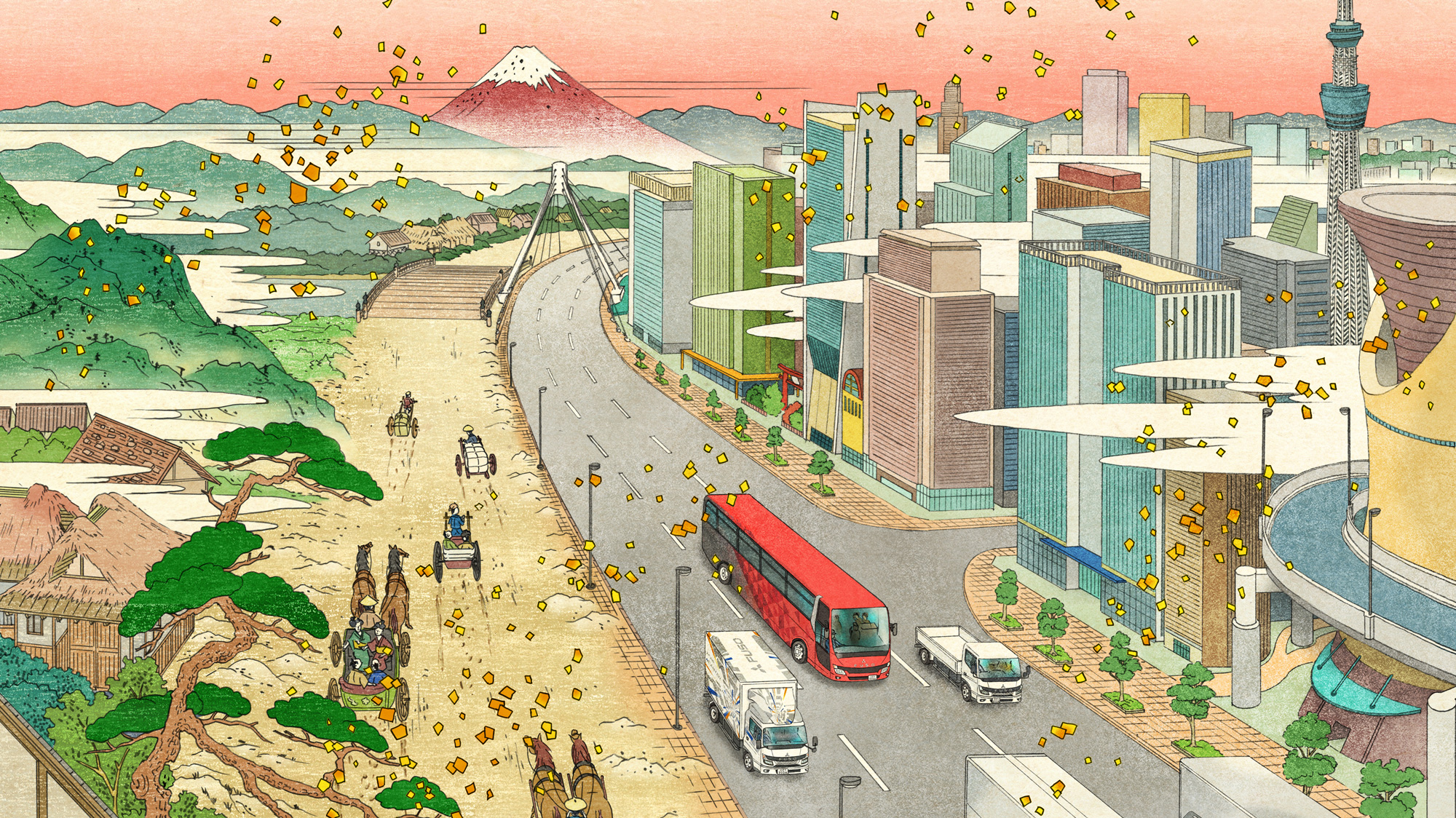
Famed furniture and industrial designer, Charles Eames said, “The details are not the details. They make the design.” Pouring over the timeless lines of these 1950-60’s-era coach bus die-cast models, it’s impossible not to appreciate the design and remarkable attention to detail FUSO is synonymous with.
On display in the lobby of the New Product Center at FUSO’s Kawasaki facility, these three die-cast models were meticulously handcrafted in an era before the use of 3D technology was available.
Measuring approximately 90cm in length each, the die-cast models were originally produced from technical drawings based on hand sketches–a process that remains largely the same today. However, now the 3D data that forms the basis of drawings and the production of models are increasingly mechanized.

